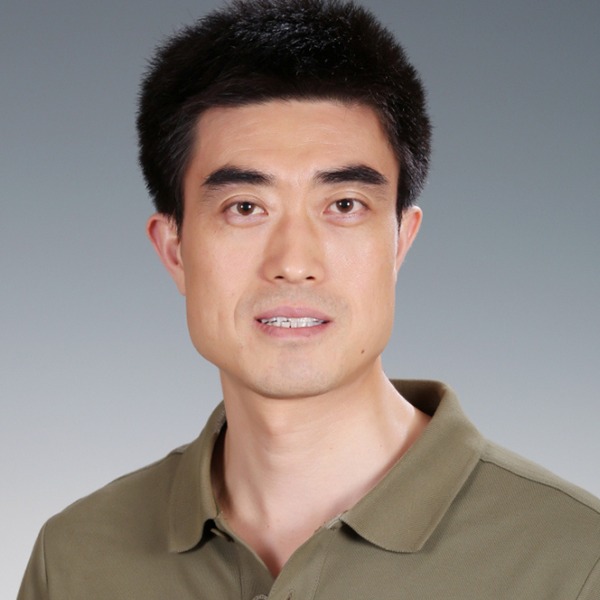Areas of Focus
- Gene editing technology
- Novel gene therapy and vaccine technology
- High-throughput functional genomics
- Molecular mechanisms of major diseases
Work Experience
- 2019 - Present Professor (tenure), Peking University College of Life Sciences
- 2016 - Present Researcher, Beijing Future Gene Diagnosis Innovation Center (ICG)
- 2015 - Present Researcher, Peking-Tsinghua Center for Life Sciences (CLS)
- 2014 - Present Researcher, Peking University Biomedical Innovation Institute (BIOPIC)
- 2007 - Present Researcher, Peking University College of Life Sciences, Biochemistry and Molecular Biology
- 2005 - 2007 Research Associate, Stanford University School of Medicine, Department of Genetics
- 1999 - 2004 Postdoctoral Fellow, Stanford University School of Medicine, Department of Genetics
Academic Background & Achievements
- 1999 - 2004 Postdoctoral Fellow, Genetics, Stanford University
- 1995 - 1999 PhD, Genetics, Michigan State University
- 1987 - 1991 Bachelor of Science, Biochemistry, Peking University
Publications
- Circular RNA Vaccines against SARS-CoV-2 and Emerging Variants, Wei W* et al., 2022
- Regulatory elements can be essential for maintaining broad chromatin organization and cell viability, Wei W* et al., 2022
- Gene editing and its applications in biomedicine, Wei W* et al., 2022
- Engineered circular ADAR-recruiting RNAs increase the efficiency and fidelity of RNA editing in vitro and in vivo, Wei W* et al., 2022
- Non-coding loci without epigenomic signals can be essential for maintaining global chromatin organization and cell viability, Wei W* et al., 2021
- Sensing of cytoplasmic chromatin by cGAS activates innate immune response in SARS-CoV-2 infection, Wei W* et al., 2021
- Genome-wide CRISPR activation screen identifies candidate receptors for SARS-CoV-2 entry, Wei W* et al., 2021
- Low-density lipoprotein receptor-related protein 1 is a CROPs-associated receptor for Clostridioides difficile toxin B, Wei W* et al., 2021
- Genome-wide interrogation of gene functions through base editor screens empowered by barcoded sgRNAs, Wei W* et al., 2021
- TRIM26 is a critical host factor for HCV replication and determines host tropism, Wei W* et al., 2021
- Reply to: Fitness effects of CRISPR/Cas9-targeting of long noncoding RNA genes, Wei W* et al., 2020
- Structural insights into the specific recognition of 5-methylcytosine and 5-hydroxymethylcytosine by TAL effectors, Wei W* et al., 2019
- PASTMUS: mapping functional elements at single amino acid resolution in human cells, Wei W* et al., 2019
- Programmable RNA editing by recruiting endogenous ADAR using engineered RNAs, Wei W* et al., 2019
- Human Neonatal Fc Receptor Is the Cellular Uncoating Receptor for Enterovirus B, Wei W* et al., 2019
- Guide RNAs with embedded barcodes boost CRISPR-pooled screens, Wei W* et al., 2019
- Genome-wide screening for functional long noncoding RNAs in human cells by Cas9 targeting of splice sites, Wei W* et al., 2018
- A surrogate reporter system for multiplexable evaluation of CRISPR/Cas9 in targeted mutagenesis, Wei W* et al., 2018
- Deciphering TAL effectors for 5-methylcytosine and 5-hydroxymethylcytosine recognition, Wei W* et al., 2017
- Glucosyltransferase Activity of Clostridium difficile Toxin B Triggers Autophagy-mediated Cell Growth Arrest, Wei W* et al., 2017
- Painting A Specific Chromosome with CRISPR/Cas9 for Live-cell Imaging, Wei W* et al., 2017
- Live visualization of genomic loci with BiFC-TALE, Wei W* et al., 2017
- Simultaneous generation of multi-gene knockouts in human cells, Wei W* et al., 2016
- Genome-scale deletion screening of human long non-coding RNAs using a paired-guide RNA CRISPR library, Wei W* et al., 2016
- High-throughput Screens in Mammalian Cells Using the CRISPR-Cas9 System, Wei W* et al., 2015
- Divergent roles of BECN1 in LC3 lipidation and autophagosomal function, Wei W* et al., 2015
- A Dual-Reporter System for Real-Time Monitoring and High-throughput CRISPR/Cas9 Library Screening of the Hepatitis C Virus, Wei W* et al., 2015
- Chondroitin sulfate proteoglycan 4 functions as the cellular receptor for Clostridium difficile toxin B, Wei W* et al., 2015
- High-throughput Screening of a CRISPR/Cas Library for Functional Genomics in Human Cells, Wei W* et al., 2014
- Bidirectional effect of Wnt signaling antagonist DKK1 on the modulation of anthrax toxin uptake
Awards
- Beijing Advanced Worker, 2020
- Changju Project Entrepreneurial Talent, 2020
- Major Medical Advancements in China Award, 2019
- Beijing Overseas Scholars Innovation and Entrepreneurship Special Contribution Award, 2019
- BI Investigatorship Award, 2019
- Peking University College of Life Sciences Unnamed Outstanding Research Award, 2019
- Fourth Peking University Industry-Academia-Research Cooperation Advanced Individual Award, 2019
- Beijing Science and Technology Award, 2018
- China Ministry of Science and Technology Innovation Talent Promotion Plan Science and Technology Innovation Entrepreneur Talent, 2018
- Peking University Teaching Excellence Award, 2018
- Tan Jiazhen Life Science Innovation Award, 2016
- China Patent Excellence Award, 2016
- Scientific Chinese Person of the Year, 2016
- Peking University Zheng Changxue Teaching Excellence Award, 2015
- Bayer Investigator Award, 2014
- The Roche Chinese Young Investigator Award, 2014
- Peking University Dongbao Teaching Award, 2012
- Most Popular Teacher Award, Peking University College of Life Sciences, 2010





